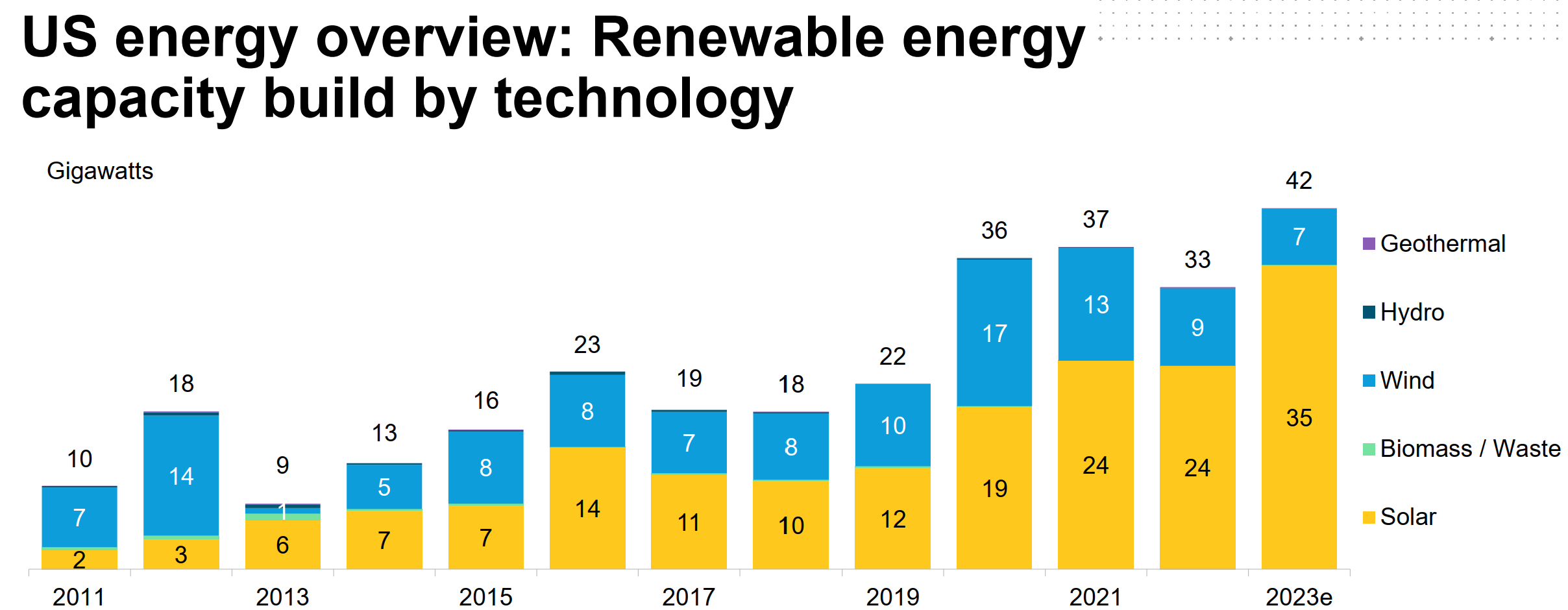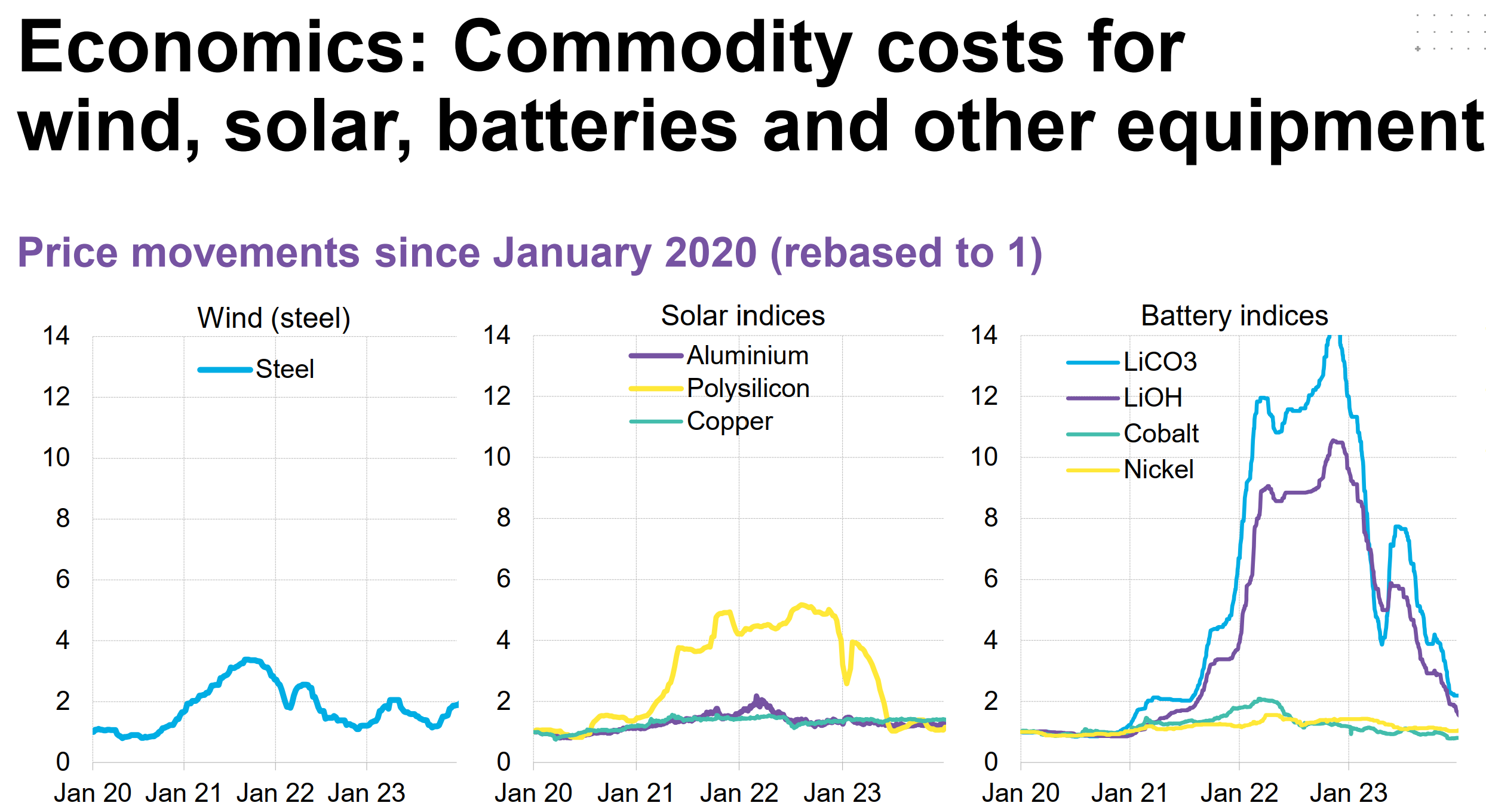From pv magazine USA
The United States deployed 35.3 GW of new solar capacity in 2023, an increase of 52% versus the 23 GW deployed in 2022. Despite lower electricity demand, significant declines in both wind and hydro generation resulted in minimal growth in total clean electricity.
The figures were released by BloombergNEF, along with the Business Council for Sustainable Energy, in their Sustainable Energy in America 2024 Factbook.

For the year, the United States set a record in utility-scale solar, deploying 23.7GW of capacity, some of which were projects delayed from the previous year due to supply chain issues. Small scale solar totaled nearly 11.6GW of capacity, a record as well. The total capacity deployed, 35.3 GW, was 52% greater than the new capacity of just under 24 GW in 2022.
The US Department of Energy’s Energy Information Administration (EIA) and Wood Mackenzie Renewables & Power project at least 50 GW of solar being deployed in 2024.
Along with solar, 7 GW of wind were deployed, in addition to 7.5 GW of battery storage. The battery capacity deployment increased by 62% over the prior year, bringing the nation’s total deployed capacity to 19.6 GW. In 2024, the EIA sees 15.3 GW of new battery capacity being deployed, which would be a 78% expansion of the nation’s battery fleet.
Popular content
In total, electricity demand fell 2.2% from 2022, even while the nation’s GDP expanded by 2.4%. The report notes that, with these two pieces of data taken together, US energy productivity (the ratio of US gross domestic product to total US energy consumption) increased by 3.8% year on year. In fact, since 1990, the compound annual growth rate (CAGR) for electricity has been slowly decreasing, hitting 1.0% in 2023, while the nation’s GDP has grown over 400% during that period.

The addition of significant new wind and solar capacity, combined with steady electricity demand, has contributed to a reduction in emissions from both the sector and the nation as a whole.
Collectively, low-emissions electricity sources, excluding nuclear, saw a marginal increase from 962 TWh to 972 TWh of generation. The flat growth was a balance of hydroelectricity falling by just over 6%, while wind fell by almost 2%. Overall, accounting for the 1% growth and a 2% decrease in electricity demand, renewables met 23% of all generation, setting a new record. Adding in nuclear power, 41.1% of all electricity generated was from zero-carbon sources, another all-time high.

One reason for the large volume of deployment growth in 2023 was a rebound from the slowdown in 2022 due to the pandemic and supply chain constraints. The biggest price increase was in solar modules, with pricing heavily influenced by a significant increase in polysilicon costs. However, since then, polysilicon prices have dropped sharply, with module prices remaining near record lows for the past several months.
This content is protected by copyright and may not be reused. If you want to cooperate with us and would like to reuse some of our content, please contact: editors@pv-magazine.com.


2 comments
By submitting this form you agree to pv magazine using your data for the purposes of publishing your comment.
Your personal data will only be disclosed or otherwise transmitted to third parties for the purposes of spam filtering or if this is necessary for technical maintenance of the website. Any other transfer to third parties will not take place unless this is justified on the basis of applicable data protection regulations or if pv magazine is legally obliged to do so.
You may revoke this consent at any time with effect for the future, in which case your personal data will be deleted immediately. Otherwise, your data will be deleted if pv magazine has processed your request or the purpose of data storage is fulfilled.
Further information on data privacy can be found in our Data Protection Policy.